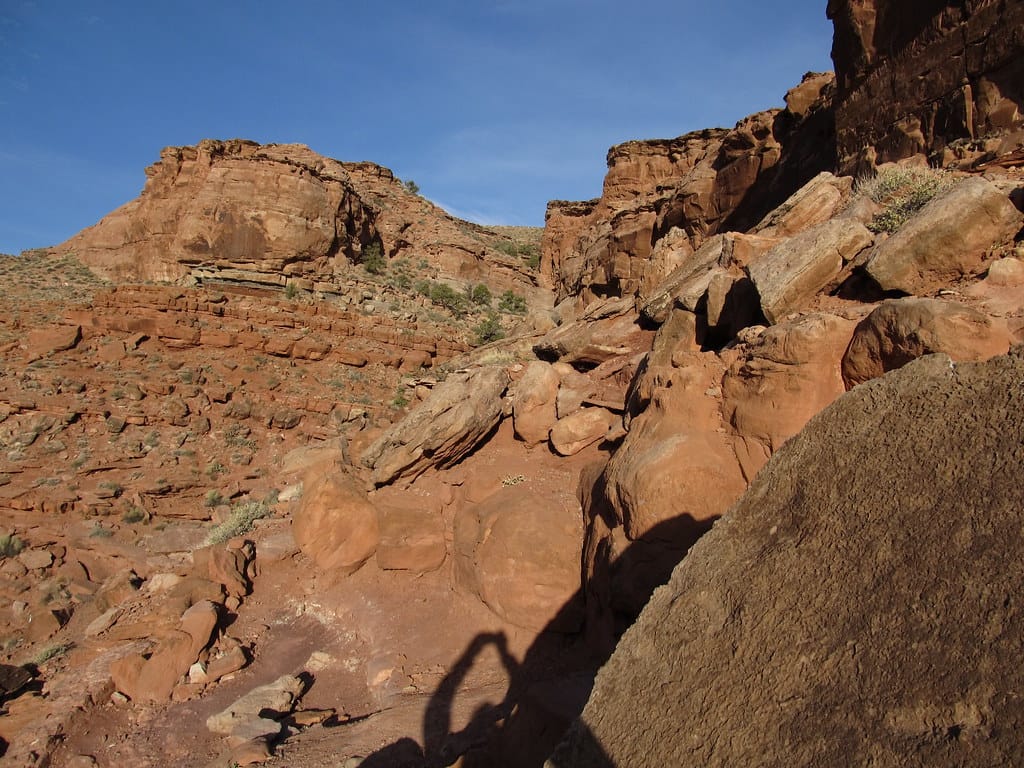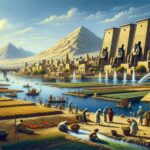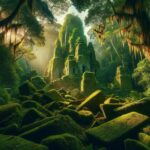Discover Moab’s Potash Road, a captivating open-air museum where dinosaur footprints and petroglyphs converge, offering a unique glimpse into Earth’s distant past. This scenic route along the Colorado River unveils a rich tapestry of geological and cultural heritage, inviting you to explore millions of years of history.
Tracing the Steps of Giants
Imagine walking where dinosaurs once roamed. Along Potash Road, clearly marked trails lead to remarkably preserved dinosaur footprints. These impressions offer tangible evidence of massive sauropods and theropods that once traversed this ancient landscape. Scientists suggest that these tracks likely originated during the Early Jurassic period, providing a window into a prehistoric world.
Decoding Ancient Messages
The sandstone cliffs along Potash Road also hold another treasure: petroglyphs. These carved images, created by ancient cultures over millennia, offer a fascinating glimpse into their lives, beliefs, and artistic expressions. Some researchers believe these panels may depict hunting scenes, spiritual rituals, or even celestial events. The petroglyphs remain a source of ongoing study, with new interpretations continually emerging. Discover the rich history and profound legacy of ancient region of ancient mesopotamia nyt as revealed in the New York Times.
Deciphering the Ancient Canvas: The Age of Potash Road Petroglyphs
The Potash Road petroglyphs whisper tales spanning thousands of years. The oldest, likely created over 3,000 years ago during the Archaic period, offer a unique perspective into the nomadic hunter-gatherers of the time. Their intricate designs, etched into the sandstone cliffs, have withstood millennia of weathering and continue to intrigue archaeologists today. Later additions by the Fremont people (circa 500-1300 AD) provide a fascinating contrast, often depicting more detailed and narrative scenes that showcase the evolution of artistic expression and cultural shifts over generations. Located along Potash Road (UT-279), approximately 5 miles south of its junction with US-191, these petroglyphs are easily accessible by car, with a designated roadside pull-out area. Specific figures of note include the “Paper Dolls” and “Bear Hunt” petroglyphs, located at coordinates (38.544571, -109.600048). While dating these petroglyphs can be challenging, ongoing research continues to unveil new insights into the cultures that created them.
Exploring the Natural Wonders
Beyond the historical treasures, Potash Road offers breathtaking natural scenery. The Colorado River winds alongside the road, reflecting the dramatic red rock canyons. The majestic Corona Arch, a natural sandstone wonder, further enhances the stunning landscape.
Protecting Our Shared Past
Preserving this fragile environment is crucial. By adhering to Leave No Trace principles—packing out all trash, staying on marked trails, and respecting the petroglyphs and dinosaur tracks—we can ensure these wonders remain for future generations.
Planning Your Adventure
- Hydration is Key: Bring plenty of water, especially during summer months.
- Proper Footwear: Wear sturdy shoes suitable for uneven terrain.
- Sun Protection: A hat, sunscreen, and sunglasses are essential.
- Respect the Site: Stay on marked trails and avoid touching the petroglyphs or tracks.
- Check Conditions: Be aware of potential flash floods and closures; check before your visit.
- Enhanced Viewing: Binoculars can enhance your appreciation of the petroglyphs and surrounding scenery.
Moab Dinosaur Tracks: Unearthing Prehistoric Giants
While the petroglyphs offer a glimpse into human history, the dinosaur tracks along Potash Road and other nearby locations provide a window into a much more ancient world. But are these tracks real? The evidence overwhelmingly suggests they are.
Authenticity of the Tracks
Geological studies confirm that the tracks are found in Navajo Sandstone, a formation dating back approximately 190 million years to the Early Jurassic period, aligning with the known existence of dinosaurs. Paleontologists have analyzed the tracks, identifying distinctive toe marks, claw impressions, and gait patterns consistent with various dinosaur groups, including sauropods and theropods. The presence of these tracks across multiple Moab sites—such as Potash Road, Mill Canyon Dinosaur Trail, Poison Spider Dinosaur Tracksite, Copper Ridge, Willow Springs, and Hell’s Revenge—further supports their authenticity, making a widespread hoax highly improbable.
Exploring Moab’s Dinosaur Track Sites
- Potash Road: Easily accessible, offering a combined experience of dinosaur tracks and petroglyphs.
- Mill Canyon Dinosaur Trail: Features a boardwalk with interpretive signs, showcasing tracks from at least eight different dinosaur types.
- Poison Spider Dinosaur Tracksite: A short hike from Potash Road, offering stunning views of the Colorado River alongside the dinosaur tracks.
Experiencing the Wonder
Visiting these sites offers a unique opportunity to connect with Earth’s prehistoric past. By exploring different locations, you can compare and contrast the tracks, gaining a deeper understanding of the diverse dinosaur species that once inhabited this area. Consulting with local experts or paleontologists can further enrich your experience, offering valuable insights into the significance of these remarkable remnants of a bygone era. Dinosaur tracks are located a short distance (approximately 200 yards) from the petroglyph panel, involving a brief walk across a potentially rocky hillside. Allow one to two hours to fully appreciate both the petroglyphs and dinosaur tracks.
By exploring Moab’s Potash Road, you embark on a journey through time, where the stories of dinosaurs and ancient cultures intertwine, creating an unforgettable adventure. Ongoing research continues to illuminate these wonders, ensuring that each visit offers new discoveries and perspectives.
- Unlock Filipino Culture: A Deep Dive into Traditions and Practices - April 23, 2025
- Unlock Spanish Culture: Insights & Opportunities Now - April 23, 2025
- White Spirit Uses & Substitutes: A Deep Dive for Pros & DIYers - April 23, 2025

















1 thought on “Moab’s Potash Road: A Journey Through Time with Dinosaurs and Petroglyphs”
Comments are closed.